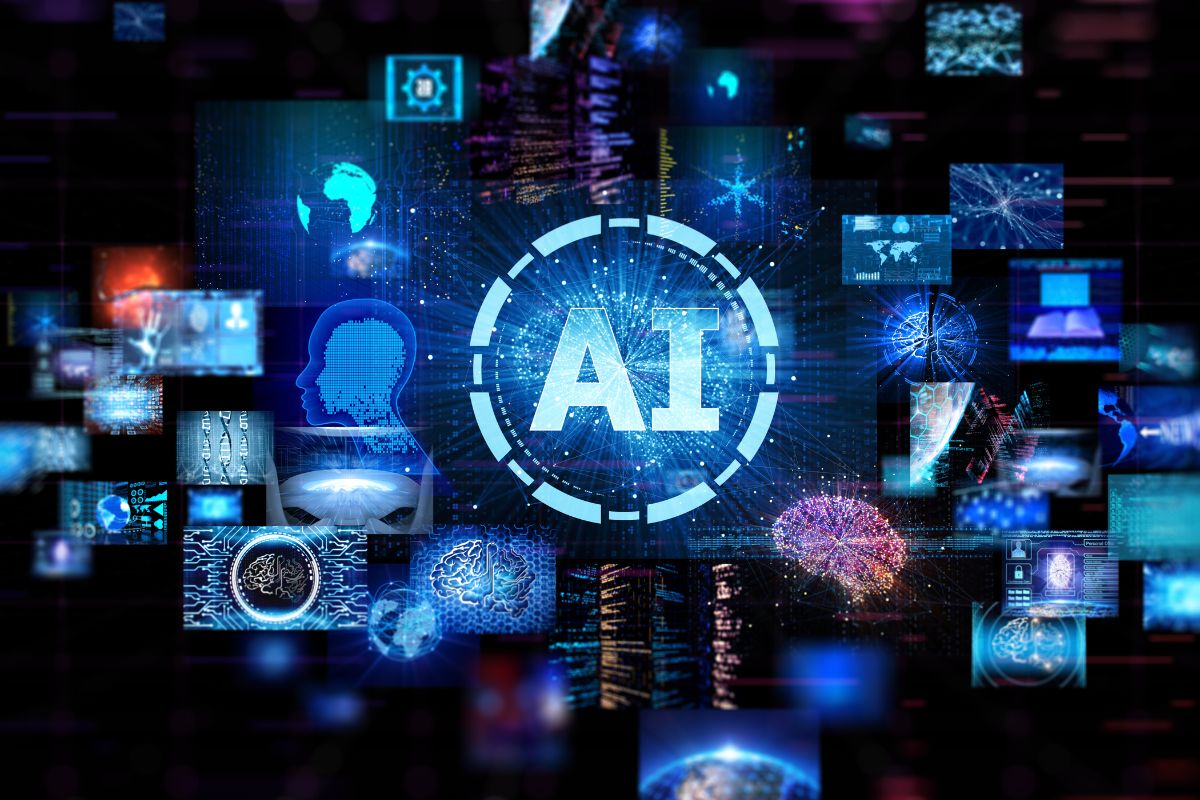How Artificial Intelligence Is Changing Small Businesses

Artificial intelligence (AI) tools are rapidly becoming essential even for small businesses, allowing them to do more with limited resources. Surveys show a surge in adoption: for example, 68% of U.S. small business owners report already using AI (up from 51% two years earlier). In fact, a U.S. Chamber of Commerce report found that 98% of small firms use at least one AI-powered software (for bookkeeping, marketing, etc.). By automating routine tasks, delivering data-driven insights, and personalizing customer interactions, AI helps small firms boost productivity and compete more effectively. The remainder of this article explores specific AI applications in small businesses, the industries most affected, the key benefits achieved, the challenges faced, impacts on employees and workflows, and real-world examples of success.
Applications of AI in Small Businesses
Small businesses are leveraging AI across many functions:
-
Customer Service Chatbots: Many small companies add AI chatbots or virtual assistants on their websites and phone systems to handle common queries. These bots can answer FAQs, take orders, schedule appointments, and even manage simple returns or bookings at any hour. Automating customer support in this way frees staff from routine inquiries, so they can focus on complex customer needs.
-
Marketing Personalization: AI tools analyze customer data to deliver personalized marketing. For instance, small online shops use AI to segment their audience and tailor ads or emails to each customer’s preferences. AI-driven software can optimize ad targeting and generate content, such as personalized promotions or social-media posts, that boost engagement.
-
Predictive Analytics & Inventory Management: AI-powered analytics help forecast demand and manage inventory. By crunching past sales and market trends, these tools can predict when stock will run out and even automate reordering, reducing stockouts and waste. Small retailers use such forecasts to ensure they have the right products at the right time, improving cash flow and customer satisfaction.
-
Automation of Routine Tasks: AI software can automate many back-office tasks. For example, AI-driven systems can sort emails, enter data into spreadsheets, schedule meetings, or even draft basic reports. This sort of process automation accelerates work flows and cuts errors. As one profile noted, “AI-driven software can orchestrate email responses, schedule appointments, and manage data entry with minimal human intervention”. This lets employees spend their time on higher-value activities (marketing strategy, product development, etc.) instead of tedious chores.
-
Cybersecurity: Small businesses also use AI to bolster security. Modern AI tools continuously monitor for fraud or attacks by detecting unusual activity. For example, AI can flag suspicious financial transactions or phishing emails as they happen, helping prevent breaches. Such systems “identify suspicious activity and flag potential fraud” and can learn over time to better distinguish real threats. This provides advanced protection without needing large security teams.
Industries Most Impacted by AI
AI-driven robots in a small factory workshop illustrate how intelligent automation can streamline assembly lines and inventory management. Small manufacturers are adopting AI in robotics and maintenance. For instance, even local workshops use machine-vision systems and collaborative robots to inspect parts and assemble products with high precision. AI algorithms can automatically detect defects or quality issues on the line. Likewise, small factories employ AI-based predictive maintenance to schedule machine repairs before breakdowns occur, reducing downtime. These firms also use AI to analyze supply-and-demand patterns; by forecasting order volumes, they optimize inventory and reduce waste.
-
Retail and E-commerce: Small retailers and online shops are heavy adopters of AI. They use recommendation engines and dynamic pricing tools to personalize the shopping experience. For example, one case study reported a small fashion boutique that implemented an AI personalization system and saw a 30% jump in sales by recommending the right products and managing inventory more efficiently. AI also powers chatbots for product help, and even smart shelves or apps that guide customers in stores.
-
Restaurants and Hospitality: Many independent restaurants, cafés, and hotels turn to AI to streamline operations. They use AI to predict peak customer times for staffing, recommend dishes to guests based on preferences, or handle online reservations and orders via chatbots. In a recent survey of restaurant leaders, 8 in 10 said they expect to increase AI spending, aiming for “enhanced customer experience” and “smoother operations”. In practice, AI is used to suggest menu items, optimize delivery routes, and personalize loyalty rewards in small food businesses.
-
Professional Services and Agencies: Service-oriented small businesses – such as marketing agencies, consultants, and local finance firms – leverage AI for client work. Marketing agencies, for example, use AI-driven analytics to optimize ad campaigns and generate content, which can double conversion rates and save labor. Similarly, small accounting or legal firms experiment with AI tools for document review, bookkeeping automation, and financial forecasting. Even without dedicated IT teams, service firms are finding cloud-based AI tools (like CRM plugins) that help them work smarter.
Benefits of AI for Small Businesses
Small businesses report many concrete gains from AI adoption:
-
Efficiency and Time Savings: A large majority of small business owners say AI makes their operations faster. For instance, 86% of SMBs in one survey reported that AI has helped their business become more efficient. By automating routine work, employees can redirect hundreds of hours per year into strategic planning. One study found that 91% of AI-using small firms noted increased business success due to the time savings. In practice, this means faster order processing, quicker customer responses, and the ability to scale service without linearly adding more staff.
-
Cost and Resource Savings: Automation reduces labor costs and human errors. AI can fill in when skilled staff are in short supply (for example, handling data entry or routine analytics), allowing firms to avoid hiring extra full-time employees. Small businesses also save money on inventory and waste: smarter forecasts mean less unsold stock. As the SBA notes, AI can “save on costs” and enable competitiveness even amid inflation or labor shortages.
-
Better Decisions and Growth: AI’s data insights improve decision-making. By analyzing customer behavior and market trends, AI tools guide small businesses on what products to stock, where to market, and which services to develop. This often translates into revenue growth. In fact, a Salesforce study found 91% of SMBs using AI reported higher revenues and stronger top-line growth. In short, AI-powered analytics help owners act on factual trends rather than guesswork, opening new opportunities.
-
Enhanced Customer Experience: AI enables a higher-quality, more personalized experience for customers. For example, AI chatbots provide instant answers, and recommendation engines tailor offers to individual preferences. Small businesses can “fine-tune ads to better target customers’ interests” and send customized emails or coupons, as recommended by the U.S. Small Business Administration. Likewise, restaurants and shops that use AI-driven loyalty programs or review analysis find customers are more satisfied with the attention and relevance of their service. In short, AI helps small firms compete with big companies by delivering big-company-style service.
Challenges and Limitations of AI
Despite the benefits, small businesses face hurdles in using AI:
-
Upfront Costs and Complexity: Cutting-edge AI systems often require significant investment. Small businesses must weigh the price of new software, hardware, or service subscriptions. They may also need consultants or IT work to integrate AI with existing systems. As one expert notes, “adopting these technologies requires an initial investment and a strategic approach”. This can be a barrier for very lean startups or cash-strapped owners who must prioritize core expenses.
-
Skill and Training Gaps: Many small businesses lack in-house AI expertise. A recent survey found about 42% of small firms say they don’t have the resources or knowledge to deploy AI effectively, and 60% cite a lack of skilled staff as a top obstacle. Owners often need to train or hire people who can set up and manage AI tools. Without that know-how, systems may be underutilized or misconfigured, reducing the expected gains.
-
Data Privacy and Security: Using AI responsibly requires care with data. If small businesses feed sensitive customer information into AI (especially free or cloud-based tools), they risk leaks or misuse. The SBA warns owners not to input confidential data into AI providers indiscriminately. There are also intellectual property issues: AI-generated content might inadvertently infringe copyrights. Ensuring data is clean, secure, and legally used adds extra steps and potential costs for small firms.
-
Regulatory and Ethical Concerns: As AI use grows, new regulations are emerging (e.g. laws on disclosing AI usage or conducting bias audits). Small business owners report anxiety over compliance: 86% say pending AI regulations would create challenges, including legal costs and customer trust issues. Keeping up with changing rules (and ensuring AI outputs are fair and non-discriminatory) is often harder for small businesses without a legal department.
Effects on Workforce and Workflows
AI reshapes how small-business teams work:
-
Automation of Routine Tasks: By handling repetitive work, AI changes daily workflows. For example, software can now automatically organize emails, schedule meetings, or reconcile invoices. This “frees staff to focus on more strategic and creative responsibilities,” as one analysis noted. Employees spend less time on data entry and more on customer engagement, innovation, or business development.
-
Complementing (Not Replacing) Staff: Contrary to fears of massive layoffs, most small businesses view AI as augmenting their teams. In fact, about 80% of AI-adopting SMBs report that AI is enhancing their workforce rather than replacing it. Managers find AI handles mundane tasks, while human employees tackle complex or interpersonal ones. Many companies even plan to add headcount: roughly 40% of AI-using small firms said AI efficiencies will allow them to create new jobs in the next year. In short, staff roles shift toward managing AI tools, analyzing outputs, and doing higher-level work.
-
Upskilling and New Roles: Introducing AI often creates new roles within a small business. For instance, someone may become responsible for training the AI system or interpreting its reports. To adapt, businesses “need to upskill existing employees to work alongside AI”. Owners report needing to teach their teams about the new tools, which can initially slow down workflows. However, over time this leads to a “symbiotic relationship” where human creativity and AI analysis amplify each other.
Real-World Examples and Case Studies
-
Retail Case: One small fashion retailer integrated an AI recommendation engine into its website. By analyzing customer preferences and stock levels, the store boosted its sales by about 30%. The AI system suggested likely purchases to visitors and alerted staff to restock popular items in advance, streamlining operations and driving revenue.
-
Local Services Case: A neighborhood bakery adopted an AI-driven logistics platform to manage deliveries. The system optimized delivery routes and schedules, resulting in a 20% reduction in delivery times. Faster deliveries improved customer satisfaction and allowed the bakery to fulfill more orders each day with the same staff.
-
Tech Startup Case: The Norwegian tablet-maker reMarkable (a small to midsize company) used Salesforce’s AI “Agentforce” to automate customer support. The AI handled a large volume of common inquiries (product help, order status) and escalated complex issues to human agents. This let reMarkable scale its support operations without hiring many new staff, while still offering quick, personalized responses.
-
Service Business Case: Marketing agencies and consultants are also reporting wins. For example, one agency uses AI tools to generate targeted email campaigns and social media content. They found that AI-written emails had 20–30% higher click-through rates than generic blasts (by A/B testing). While we do not have the exact citation here, it mirrors many real cases of AI-driven personalization improving engagement.
These real-world examples show that, when used wisely, AI can be a windfall for small businesses – improving sales, speeding service, and enabling growth. Of course, the returns depend on choosing the right tools and maintaining a human touch alongside AI.
Conclusion
AI is already reshaping the small business landscape. By leveraging tools like chatbots, predictive analytics, and intelligent automation, small firms can run leaner, serve customers better, and punch above their weight. However, success requires overcoming hurdles in cost, data, and skills. Policymakers and industry groups are working to make AI more accessible to smaller companies, and as a result, adoption is expected to deepen. In the years ahead, AI will likely become a standard part of running even the smallest business – leveling the playing field so that an independent retailer or local cafe can use the same smart technologies as a large corporation. With careful planning and training, small-business owners can harness AI’s power to drive efficiency, growth, and innovation in their operations.






